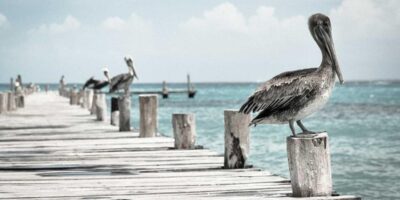Exploring Local Fishing Spots Without a Boat
Fishing is a great way to relax, connect with nature, and enjoy some leisure time. Whether you’re an experienced angler or a novice, shore fishing offers a convenient and accessible option. You don’t need a boat to catch fish; you just need to know where to go. Here are some excellent places to test your fishing skills without setting sail.
Rivers Banks
Rivers are ideal for shore fishing. They provide diverse habitats and attract various fish species. Look for areas with natural cover, such as fallen trees, rock formations, and vegetation. These structures offer hiding spots for fish like bass, walleye, and trout.
Consider fishing downstream of dams or bridges. These spots often have deeper holes and current breaks where fish congregate. Early morning or late afternoon are prime times, as fish are more active and likely to bite.
Lakeshores
Lakes offer countless shore fishing opportunities. Many public parks have designated fishing areas with easy access to the water. Fish near structures like docks, piers, or jetties. These locations attract fish seeking shelter from predators.
Pay attention to the wind direction. Fish tend to gather on the windward side, where food gets blown into shallower waters. Choose spots with gradual drop-offs, which often house larger fish. Species like crappie, catfish, and perch are commonly found here.
Ponds and Urban Lakes
Urban fishing has gained popularity due to its accessibility. Municipal parks may contain well-stocked ponds designed for public fishing. These areas are perfect for beginners and families.
Look for community fishing programs. They often hold events to encourage people to fish. Check local regulations, as catch-and-release rules may apply. Try using smaller baits and lighter tackle to entice pond fish such as bluegill and sunfish.
Canals
Canals offer unique fishing opportunities. They have slower-moving waters and are home to species like carp and catfish. Urban canals can serve as hidden gems for anglers looking to avoid crowded traditional spots.
Focusing on bends or intersections in canals can yield good results. These areas can hold fish during both daytime and night. Using prepared bait like corn or boilies can improve your chances here.
Fishing Piers
Piers extend into deeper water and provide an excellent platform for shore anglers. They’re popular with those targeting saltwater species such as flounder, mackerel, or sea bass, without needing a boat.
Bring a sturdy rod suited for ocean fishing. Many piers offer amenities like bait shops and restrooms, making them convenient. Early morning and before dusk are optimal for pier fishing.
Creeks and Streams
Small creeks and streams can be productive fishing spots, especially during spring and fall. They can offer solitude and the chance to catch smaller fish like brook trout.
Focus on shaded pools and riffles. These spots often provide cooler water and higher oxygen levels, attracting fish. Using lightweight tackle helps you maneuver easily in these narrow waters.
Reservoirs
Reservoirs are engineered bodies of freshwater that can present good fishing opportunities. They are typically stocked with a variety of fish, including bass and trout.
Reservoirs have specific areas like points and coves that deepen quickly, making them ideal spots. Using sonar or observing the water can help identify fish location patterns.
Beaches and Surf Fishing
Fishing on beaches offers the excitement of surf fishing. This method involves casting lines directly into the ocean or a bay from the shore.
Check tide schedules; high tides bring fish closer to the beach. Anglers usually target species like striped bass, red drum, or snook. Use long rods and heavy sinkers to keep your bait in place amidst waves.
Fishing Parks
Some parks are designed with fishing in mind. They offer maintained shorelines, piers, and accessible paths. They’re suitable for those with disabilities or anyone who prefers a more structured fishing spot.
These parks can be found using local wildlife department resources. Follow any specific park rules and regulations while fishing.
- Know your local fishing regulations
- Research fish stocking reports
- Consider weather patterns and seasonality
- Practice ethical fishing by leaving no trace
Finding these spots might require a little research and exploration. Fishing apps and websites can provide local insights. With these options, you’ll never be far from a satisfying fishing experience, all without needing a boat.
